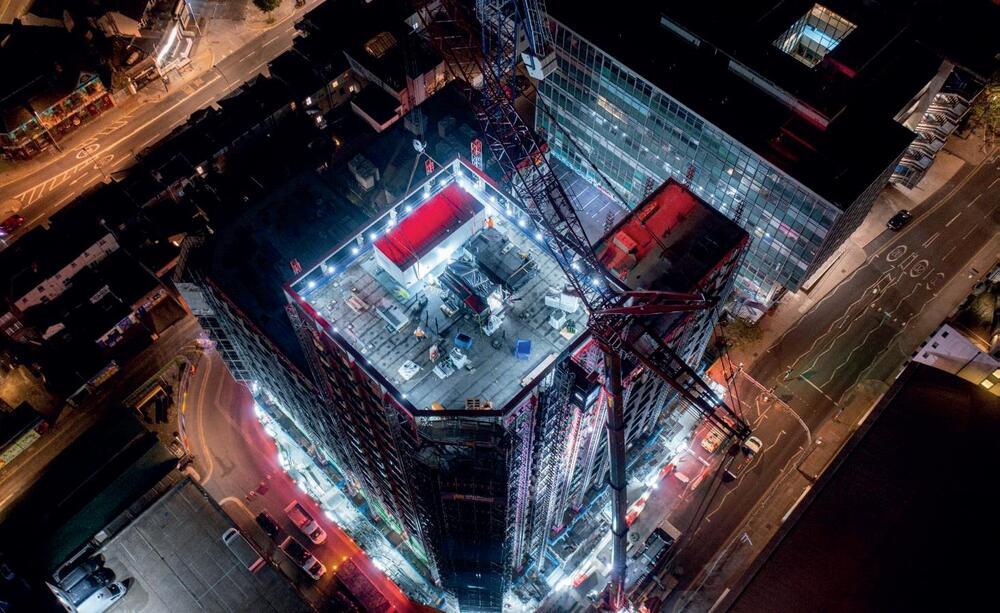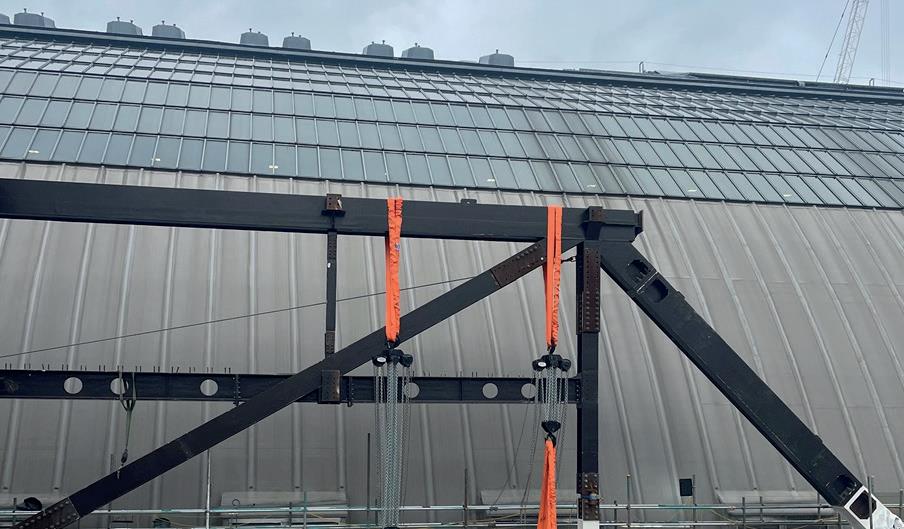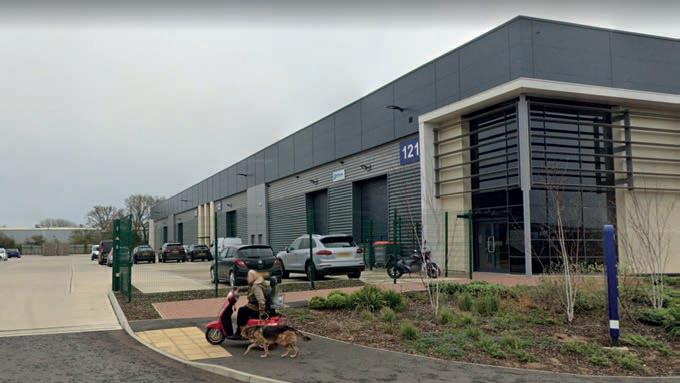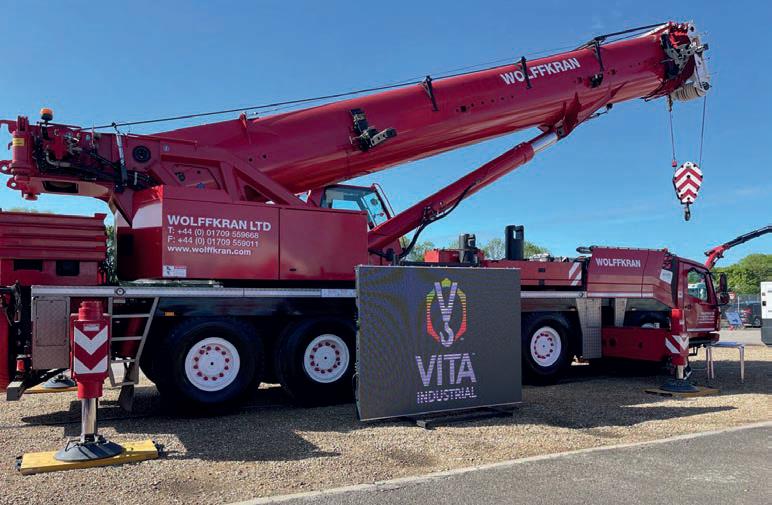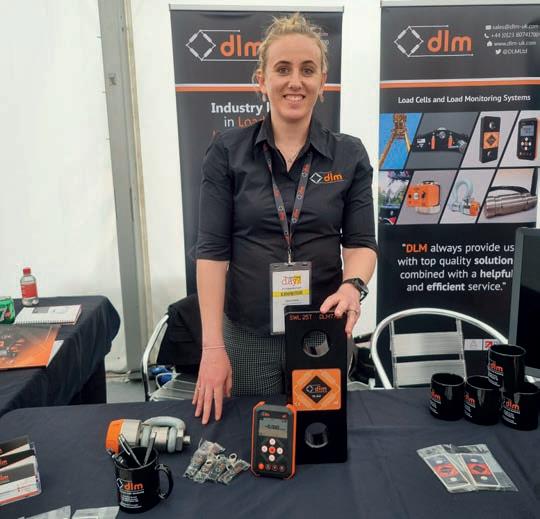Critical components
19 June 2023The area between the hook and the load is crucial to lifting safety and efficiency. Latest innovations underpin a sector that is booming. Cranes Today reports.
Below the hook equipment refers to any device or hardware that attaches to a load and connects it to the hook of a crane or other lifting equipment. This equipment is used to secure, stabilise and manipulate loads, and includes devices such as lifting beams, frames, slings, load orientation equipment, and load cells.
With the safety of lifting operations being paramount below the hook equipment is an essential part of lifting operations that can significantly impact this by, for example, providing greater stability and improving lifting efficiency. Some below the hook equipment can be customised to suit specific requirements and environmental conditions making it an incredibly versatile tool in the lifting industry.
VERSATILE APPROACH
Versatility is a key design feature of the latest lifting system from UK-headquartered spreader and lifting beam manufacturer Modulift. The Multi-Point is Modulift’s new flagship all-in-one beam designed to save rigging time and maximise use across multiple lifting applications. It works as a semi-spreader or a lifting beam and is also suitable for tandem lift operations, says Modulift, as it enables users to lift across multiple points at varied spans.
The semi-spreader/lifting beam was designed with safety and practicality in mind and its multiple connection points, on both the top and bottom, enable it to be adapted to suit any situation.
The Multi-Point was designed using 3D Linear Analysis and manufactured to BSEN 13155 standards. The system’s modular design means it can lift spans from 3 to 12m, with a lifting capacity from 12t right up to a 600t.
The Multi-Point has an optional 360-degree swivel hook and extended support stands which Modulift says makes it suitable for tandem lifts with two cranes when there is only one lower lifting point required and rotation of the load is critical. The Multi-Point Beam can also be used as a semispreader to give a more balanced lift, or as a lifting beam when headroom is restricted.
RANGE OF APPLICATIONS
UK manufacturer of spreader beams Britlift reports its modular beams are being used for a wide range of applications.
UK lifting specialist Notus Contract Lifting used Britlift spreader beams to lift a 13,000kg packaged plant room at 27m radius into place on a new 57m-high apartment and office block in Brighton town centre.
The job took Notus six months of planning. The company only started buying Britlift products in February 2021 and it now owns a range of modular spreader beams from 8t to 24t capacity.
Adam Thomas, technical director at Notus Contract Lifting, said: “We find the Britlift spreader beams extremely useful because of their modularity. We keep at least one spreader in each of our vans at all times. We use them for a range of lifting applications from construction and modular buildings to factories and air handling units.”
UK-based modular housing contractor Rollalong, one of the largest offsite design and build contractor in the south of England, also uses Britlift spreader beams to improve safety and efficiency when delivering and installing prefabricated building sections – which could range from houses to full accommodation blocks.
Patrick Nolan, installation manager and lift supervisor for Rollalong, says, “Primarily I use the Britlift beams for house building – so it could be anything from a 7m to 10m spreader beam required.
“Most of our modular houses are comprised of four boxes, two for the ground floor and two for the first floor, meaning fairly predictable lifting operations. With the Britlift beams we know we’re lifting in a safe and controlled way.”
Because of the range of sizes Rollalong requires it prefers to hire the beams from a company called Below the Hook rather than own them. “Hiring gives us much more flexibility,” added Nolan. “Below the Hook take care of all the testing and transportation to and from site. It means we can fully focus on the lifting operations as they handle everything else.”
IN THE FRAME
Spreader frames are another option to add control and predictability to lifting operations. Modulift has just redeveloped its CMOD Modular Spreader Frame which now comes with an updated Corner Unit design which, it says, is up to 40% lighter while also being stronger than the original version. In addition, Modulift says the new design is up to 50% less expensive, too.
The new CMOD Corner Unit was designed using advanced ANSYS engineering software packages. Modulift’s in-house engineers conducted a non-linear contact stress analysis on the corner unit bow simulating a full design load applied through the shackle. As a result, the new and improved corner units are designed to minimise contact stresses between the top shackle bow and corner unit centre plate, providing optimal performance and durability.
New CMOD Corner Units can be combined with existing Modulift Struts and T-Pieces to create 4-, 6- or 8-point lifting frames.
Modulift’s CMOD range features eight different sizes to suit individual lifting needs, starting with the CMOD 6, capable of a maximum WLL of 8t and an assembled span range between 0.5m and 2.5m, all the way up to the CMOD 250, with a maximum WLL of 300t and a span range between 2m and 20m.
ORIENTATION DAY
Another area of below the hook equipment designed to provide greater control when lifting loads is load orientation devices – an niche that has developed quickly over recent years with systems from Verton, Roborigger, Vita Industrial, and Torquer utilising different techniques to achieve laod control.
The system Inverness, Scotland-headquartered Torquer has developed is called the Halo (Hands-free Autonomous Load Orientation), the latest iteration of which the company showcased at the recent Vertikal Days trade show in the UK. The system is designed to keep workers away from moving loads by giving them remote control over the crane load rotation.
Torquer’s solution is unique in that it uses accelerating water to generate torque. This, the company says, prevents the danger and energy usage associated with the high-speed rotating steel discs of gyroscopes.
It is available as a lifting frame or as an independent device that fits to any lifting beam. Torquer managing director Angus Jamieson says the company is continually looking to evolve the Halo system and make any improvements it can.
“We’ve seen some demand for our lifting frame to have more power but without extra weight,” he said at Vertikal Days. “We found that the bigger we make the [lifting frame’s] circuit you actually get more power from the same amount of water.
“We’ve found that by doubling the lifting frame’s dimensions you can get up to eight times more turning power. We’ve just sent one of these bigger units out to Abu Dhabi, UAE, where it will be used for lifting pipes off a ship.”
On the Halo that fits lifting beams Torquer has also been lightening the system by swapping out its steel tanks for polyethylene tanks. “These are about 500kg lighter each,” highlights Jamieson “By reducing its weight the reach it can be used at on, say, a tower crane, is increased. It's all about trying to keep the weight down.”
Load orientation device manufacturer Vita Industrial was also at Vertikal Days, on Wolffkran’s stand. It used the event to launch its Vita Load Navigator (VLN) to customers in the UK and Europe.
The Vita Load Navigator uses intelligent aviation sensors to detect load position, windspeed, and more than 1,000 other data points per second. Highpowered air thrusters adjust loads within milliseconds with up to 1° accuracy, the company claims. The unit is controlled via remote for precision lifting.
Vita Industrial has also been working with DPR Construction, a US-based general contractor with projects worldwide. In recent months, DPR and Vita have partnered in a pilot programme of Vita’s hardware and software solutions at a project site in California, USA.
In the 'Marketplace' at Vertikal Days, Southampton, UK-based load monitoring specialist Dynamic Load Monitoring (DLM) was celebrating its 30th anniversary.
The company started by supplying subsea load pins to the offshore cable laying industry, with tensile and compressive load cells becoming in demand from local and national lifting companies. Growth overseas dovetailed with expansion of calibration services as, over time, DLM expanded into electronics.
“We still work in the same industries but have expanded and improved our product offerings and scope of our supply internationally,” said Martin Halford, managing director. “We are constantly innovating and looking at how our products can be better. We want to totally digitise the company and all its processes, and in the next three years we want to go paperless. We also want to position ourselves as the prominent load cell manufacturer in the lifting industry and continue to be known for offering custom solutions to clients’ requirements. Longer term, we aim to be the key equipment supplier to the offshore cable lay industry and be able to offer a complete package to clients ahead of projects.
“We will likely also need to expand both domestically and internationally, with nearly half of our current business already being generated overseas.”
In conclusion, it seems that the constant, unchanging value of safety and efficiency in lifting operations have provided a springboard for innovation and evolution. The longevity, innovation and expansion of manufacturing facilities noted in this feature pays testament to the success of this.
A show of strength
Carl Collins, marketing manager at load cell specialist Dynamic Load Monitoring (DLM) demonstrated the company’s Standard Tensile Link at Vertikal Days trade show in the UK, along with the company's other products.
“The tensile link load cell can go below the hook of a crane to measure tensile strength,” says Collins. “Our Tensile Links can be used to weigh anything from one tonne to 500 tonnes – so things like water bags and concrete. It’s rigged with shackles on either. One of its key benefits is that it’s a bit more accurate than our shackle load cells – although the shackles have less height for rigging, so which to use really depends on the user’s requirements.”
The tensile link is made of light weight aerospace grade aluminium and can be branded for rental crane or rigging companies, such as DLM has done for RSS.
The tensile link has a 800 metre range and the handheld display is built by DLM to be interference-free for use in environments such as ports.
It also provides a ‘rolling average’ feature for dynamic lifts where rapid peaks and troughs may otherwise make obtaining a reading impossible.
Heat resistant soft sling
Lift-Tex Heavy Lift Slings is a heavy lift sling manufacturer based in the Netherlands. It specialises in heavy lift HMPE round slings (such as Dyneema) for heavy lift projects worldwide.
The company has launched Inferno, a heat resistant soft sling that lifts loads in temperatures up to 200°C. It is made of 100% aramid and comes in yellow or black. Its knitted jacket is reparable for a sustainable solution. It is available from 0,5m to 65m.
crosby relocates production facility for growth
The Crosby Group has relocated production of its Crosby Straightpoint load monitoring equipment and Crosby BlokCam and crane camera systems to a larger, state-of-the-art facility.
The new production facility is in Waterlooville, Hampshire, a short distance from its previous location in Havant. The Crosby Group says the expanded space will provide additional capacity to meet the increasing current demand for its Straightpoint and BlokCam products as well as allow for future growth.
RSS Chain Blocks for iconic London venue
Structural steelwork design and installation company BHC is using two 30t capacity chain blocks supplied by Rope and Sling Specialists (RSS) for a central London construction project.
The RSS-branded chain blocks are working in tandem with synthetic roundslings of the same capacity to vertically lift a main truss beam, as BHC fulfi lled a scope of work to an iconic venue that hosts trade shows, sport, and music events.
RSS says the chain blocks also drew much attention, given their relatively uncommon utilisation in such applications, especially in such an urban setting.
BHC was formed in 1992 with the capacity to fabricate 30t of structural steel per week; today, it can process 800t of such steel per week and services the agricultural, commercial, education, oil and gas, health, industrial, and power sectors daily. Its facilities and plant are in a recently extended 55-acre site, including a 7.4-acre (approx. 30,000-square metre) manufacturing hub.
